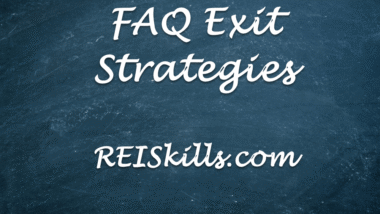Research Report: A Guide to Private Placements in Self-Directed IRAs
Disclaimer: This report is for educational purposes only and is not financial, legal, or tax advice. Investors must conduct their own due diligence and consult with qualified professionals before investing. Private placements are high-risk investments and may be illiquid.
Executive Summary
Private Placements have been a permitted investment within Self-Directed IRAs (SDIRAs) for many years, attracting sophisticated investors seeking portfolio diversification and the potential for higher returns. This report explains what private placements are, how they function within the structure of a Self-Directed IRA, and the critical rules—including accredited investor status and the impact of the JOBS Act—that govern them. As traditional lending tightens, private placements offer a compelling, though complex, opportunity for SDIRA owners to act as a source of capital for private companies.
- The Potential of Private Placements in IRAs
A “Private Placement” is an investment in a privately-held entity, such as a company or small business, that is not offered to the general public. With banks often tightening lending standards, the demand for development capital from private investors has grown.
For businesses, obtaining capital from a Self-Directed IRA owner can be simpler and faster than navigating the institutional loan process. For the SDIRA owner, this form of private lending or equity investment has the potential to generate returns that outpace traditional vehicles like the stock market or Certificates of Deposit (CDs).
The alignment between Self-Directed IRAs and private placements is strong. Consider these insights from a 2013 Global Survey of Individual Investors by Natixis Global Asset Management, which highlighted a growing interest in alternative investments:
- 76%of investors were interested in products unrelated to broader market performance.
- 61%no longer trusted the traditional equities/bond approach for the best returns.
- 72%would consider alternative investments if their advisor recommended them.
The scale of the opportunity is significant. By 2012, Americans had approximately $5 trillion invested in IRAs, with nearly $100 billion (2%) held in self-directed accounts. For investors and advisors, understanding private placements is key to accessing this evolving landscape.
- The Basics of Private Placements
A Private Placement is a non-public offering to a limited group of investors. Because it is not a public offering, the security does not need to be registered with the U.S. Securities and Exchange Commission (SEC).
Many private placements are conducted under Regulation D, which specifies the amount of money that can be raised and the types of investors who can participate.
- Research Link: SEC Investor.gov on Regulation D
Accredited Investor Rules
To protect investors, strict rules historically limited private placements to “accredited investors.” When investing through an IRA, the SEC looks through to the IRA owner; the IRA is considered accredited if its owner is accredited.
According to the Investment Company Institute (ICI), to qualify as an accredited investor, an individual must meet one of the following criteria:
- Have an individual net worth (or joint net worth with a spouse) exceeding $1 million, excluding the value of their primary residence.
- Have an individual income exceeding $200,000 in each of the two most recent years, with a reasonable expectation of the same in the current year.
- Have a joint income with a spouse exceeding $300,000 for those years, with a reasonable expectation of the same.
- Research Link :ICI Perspective on IRA Ownership
- The Changing Landscape: The JOBS Act of 2012
The Jumpstart Our Business Startups (JOBS) Act, signed in 2012, significantly changed the landscape for private placements by easing fundraising rules for startups and expanding access for investors.
Key provisions of the JOBS Act include:
- General Solicitation: It loosened the rules on general solicitation and public advertising for certain Rule 506 offerings, allowing companies to publicly seek investors.
- Crowdfunding: It created a framework for “equity crowdfunding,” allowing private placements to be offered to both accredited and non-accredited investors through online portals.
- Shareholder Thresholds: It increased the number of shareholders a company can have before it must register with the SEC.
- Regulatory Relief: It relaxed Sarbanes-Oxley Act compliance for “emerging growth companies,” reducing the regulatory burden.
- Research Link: SEC Spotlight on Sarbanes-Oxley
- Fundraising Limits: It raised the fundraising limits for some offerings from $5 million to $50 million.
Important Note for IRA Investors: While the accredited investor rule does not technically apply to investments made through a registered crowdfunding portal, the private placement issuer may still require investors to be accredited.
- How to Invest in Private Placements with a Self-Directed IRA
Investing in private placements through a Self-Directed IRA is a popular strategy for diversification and potential growth. At The Entrust Group, the process is straightforward:
- Open a Self-Directed IRA
- Fund the account via a contribution, transfer, or rollover from an existing retirement plan.
- Direct your investment by providing all required investment documentation to your self-directed administrator with instructions to purchase the private placement on behalf of your IRA.
Common private investment options for SDIRAs include:
- Private Placements & Equity
- Pooled Investment Funds
- Secured and Unsecured Promissory Notes
- Limited Liability Companies (LLCs) and C Corporations
- Partnerships
- Conducting Due Diligence: A Critical Investor Responsibility
The high-reward potential of private placements comes with high risk. Conducting thorough due diligence is non-negotiable.
Key Due Diligence Tips:
- Scrutinize High-Return Promises: Be wary of guaranteed or exceptionally high returns. If it sounds too good to be true, it probably is.
- Research the Principals: Investigate the background of the company executives and brokers. Meet them in person if possible and keep detailed notes.
- Review All Documents: Carefully read the Private Placement Memorandum (PPM), Subscription Agreement, and Accredited Investor Questionnaire. Do not sign anything you do not fully understand.
- Understand the Terms: Research the investment’s risks, liquidity options, minimum funding requirements, and conditions for a return of funds if the offering does not close.
- Consider Your Timeline: If you are near retirement, ensure the investment’s lock-up period won’t prevent you from taking your Required Minimum Distributions (RMDs).
- Never Falsify Information: Do not agree to falsify financial information to qualify as an accredited investor.
- 4 Keys to a Smooth Administrative Process
- Provide Required Documents:The investment entity may require copies of a passport, driver’s license, or utility bill. Submit clear, legible copies to your administrator.
- Know Your Administrator’s Role:Understand that The Entrust Group is a third-party administrator, not an investment advisor. SDIRAs are not protected by the Employee Retirement Income Security Act (ERISA).
- Research Link: S. Department of Labor on ERISA
- Manage Your Paperwork: Ensure you and The Entrust Group receive copies of all statements, reports, and notices related to the investment.
- Document Additional Funding: If the investment requires additional capital, provide your administrator with the supporting documentation (e.g., a capital call notice from the entity).
Conclusion & Further Learning
Private placements within a Self-Directed IRA represent a powerful tool for investors seeking to actively diversify their retirement portfolios beyond the stock market. While the risks are substantial, a disciplined approach centered on rigorous due diligence and a clear understanding of the rules can help investors navigate this complex arena.
For ongoing education about self-directed alternative investments, including webinars, reports, and live events, please visit the official resource center.
- Primary Educational Resource: The Entrust Group Learning Center
Report Prepared For: www.REISkills.com
Topic: Private Placements in Self-Directed IRAs
Source Compilation: Based on content and research links provided, including resources from The Entrust Group, the U.S. SEC, the Investment Company Institute, and the U.S. Department of Labor.



